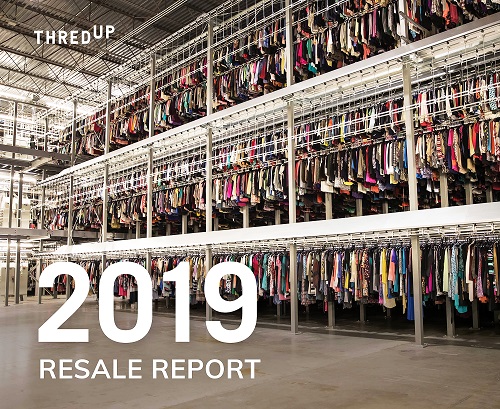Antiques Cheaper Than IKEA
by Pontus Silfverstolpe
Not infrequently, one hears about antique dealers going bust due to a lack of interest in their standard wares. At the same time, it can be seen that the prices of much antique furniture and objects sold at auction over the past two decades have steadily declined to a level never seen before. If you believe the sector’s own predictions, then it looks grim, truly grim.
But what actually is the future of old, brown furniture, which is what many of us imagine when we think about classic antiques?
As so often before, the pendulum seems to be swinging back just when it appeared darkest of all. Because, as a matter of fact, the downward trend seems to have turned in recent years.
Global warming melting the polar ice caps, huge floods sweeping across vast coastlines, storms destroying entire towns and excessive heat may rightfully bring about a renewed interest in antiques.
Furniture sales listed on Barnebys in 2018 increased by 32% compared to the previous year. Above all, interest has risen among people under 45: the majority coming from Generation Y and Generation Z at an age when many people buy and furnish their first home.
Driving this change is an upswing in the secondhand market for furniture, vintage clothes, and household items, thanks to many more people being climate-smart. Increasingly, the secondhand market is the first choice when buying furniture and decor.
According to a number of surveys, the home accounts for 20% of a person’s climate footprint, of which 9% is furniture and interiors. In other words, buying secondhand is not just a trend, it is a necessity if we wish to alter the course of runaway environmental devastation.
Fashion on Trend
The same generations that are increasingly eschewing “fast furniture,” in other words newly produced furniture of energy-intensive production and poor quality, are also rejecting “fast fashion.” Clothes have long been a means for people to communicate and convey personality and social status. But, as many people know, the fashion industry creates great environmental problems, especially as consumption has risen.
The rapid production of clothes at low cost creates pollution and the non-recyclable materials used in production harm our environment. Furthermore, online shopping, which has risen sharply in recent years, has other disadvantages in the form of all the packaging almost solely being made of plastic. This is one of the reasons why the secondhand market, where high-quality used goods are sold for a fraction of the original price, has scaled new heights.
According to the online platform for secondhand clothes, thredUP, the secondhand market is good for almost $25 billion and is estimated to double in value over the next five years, to around $52 billion by 2024. Significantly, the report shows that the growth is due, once again, to Generation Y and Generation Z, whose consumption of secondhand goods is 2.5 times higher than a typical consumer.
The report also shows that consumers who take advantage of the range of secondhand offerings, bought on average, 28 fewer items of clothing than they did two years ago.
It looks as if the Marie Kondo effect has got results. No longer does fast fashion seem to provide the same value, with Generation Y and Generation Z preferring recovered clothes and environmentally friendly and environmentally aware brands that follow trends ahead of newly produced clothing. One reason why, in the next decade, the secondhand clothing industry is predicted to grow 1.5 times more than the fast-fashion industry.
The Pippi Longstocking of Our Times
I usually say that I work in the world’s most sustainable sector. Just like the World Wildlife Fund for Nature (WWF), I have spent decades urging and encouraging people to reuse and buy antiques in order to reduce climate change. But it is not easy to make your voice heard.
Someone who has been more successful and really made people listen is Greta Thunberg, the 15-year-old girl who has already graced the covers of TIME and Society, as well as Wired and The Nation, not to mention a nomination for the Nobel Peace Prize. But how did a young girl get the whole world to listen, after the antiques business, researchers and politicians tried for so long? The answer is simple. She speaks about something that concerns us all. And unlike most politicians, she does so in a way everyone can understand.
With the same sense, inner strength and conviction as Pippi Longstocking, but with braids hanging straight down instead of sticking out, she takes to stage after stage, square after square, city after city with her well-chosen words. Brief and to the point, she overcomes everyone’s doubts by delivering the uncompromised truth, so that politicians weep, children demonstrate and the hairs stand up on my arms.
Clearly, the message cannot be dismissed as political or populist. Above all, we know in our hearts about the consequences of actions from generations past, the effects it will have on the future of our children, and the indicators currently on display affecting the times we live in.
But perhaps most of all, it is precisely because there is something infinitely more credible about a child’s uncorrupted message and young voice brimming with energy instead of an adult’s cynical and tiresomely doctored admonitions or excuses. What today’s most famous Swede and best-known 15-year-old didn’t know one year ago when she sat on the sidewalk outside Sweden’s parliament in August, is that she would also become the antique world’s most prominent spokesperson.
To the Future
Now it is our turn to carry the torch and agree on the message: it pays to buy and furnish secondhand. While the global prices of 20th-century design have risen dramatically, the prices of classical, everyday antiques have tumbled at the same time. Today, you can buy a unique handmade chest of drawers of fantastic quality made in the early 19th century for less than a new one available at the giant store with the cheap hotdogs (IKEA). Knowing that it benefits both the wallet and the environment, everyone should watch the new renaissance of antiques!







Related posts: